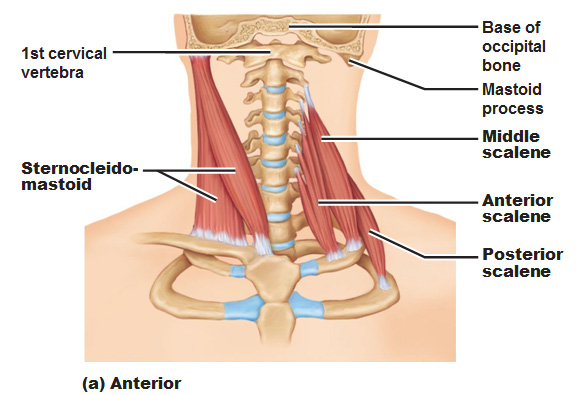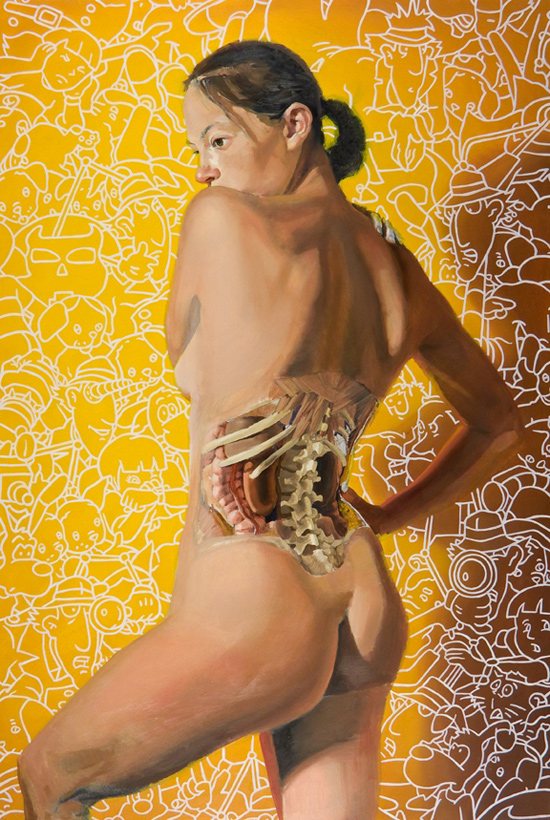Muscles of the Neck and Vertebral Column

Sternocleidomastoid
This is the muscle you could feel and see it pop out when you look to the side. The function is to create flection of the neck (neck forward) when it contracts when they act together. When only one side acts as a time, it helps you rotate your head to face the opposite side and laterally flex the head to the same side (it’s an oblique movement that is occurring). The origin is the manubrium and the the medial 1/3 of the clavicle. This inserts into the mastoid process.
Scalenes
These are very closely related to the SCM and very difficult to get to. They are usually the ones that get cramped up over night. They help pull on the cervical vertebrae instead of the head to create flexion of the neck and rotate.
When the scalenes contract they help elevate the top two ribs. When you’re at the extreme end of your breathing, especially during exercise, these help give you more volume by raising the ribs. and also play a role in flexion of the neck and rotating it. The origin of the scales are the transverse process of the cervical vertebrae and it inserts into the first and second ribs.
Splenius muscles
These are found in the back of the neck. These are what you feel get tired when you sit close to the screen at a movie theater. When both the splenius muscles act together, they are what extend the head (bring it head back). When one side acts at a time, it helps rotate the head to the same side and or laterally flex the head to the same side.
They origin runs from the nuchal ridges of the occipital bone all the way to C7. All of these bundles collect to insert into the mastoid process. (The SCM also inserts into the mastoid process).
Erector Spinae: (lateral to medial: iliocostalis, longissimus, spinalis)
These are 3 separate, long columns of muscles on either side of the vertebral column that extend the back and help return the trunk to an upright position.
The iliocostalis runs from the iliac crest to the ribs.
The longissimus runs medial to the iliocostalis. It runs from the spinous processes of the lumbar vertebrae to the ribs. The muscle belly near the lumbar is called the iliocostalis lumborum.
The spinalis runs medial to longissimus. It runs from one spinous process to the one above it on the lumbar and thoracic vertebrae.
They are literally what help straighten your back up.
Use this Table of Contents to go to the next article

YOU ARE HERE AT THE MUSCULAR SYSTEM








